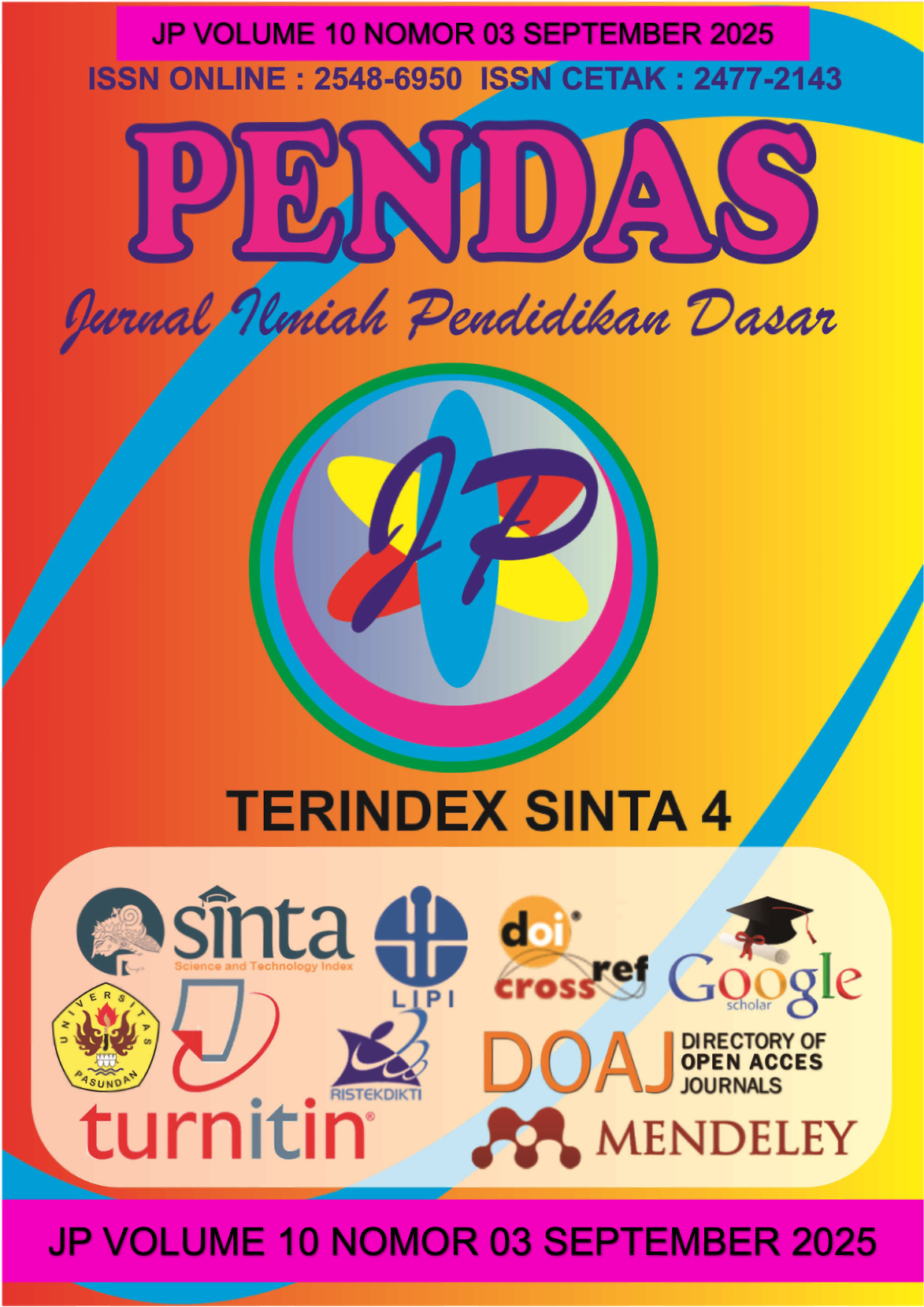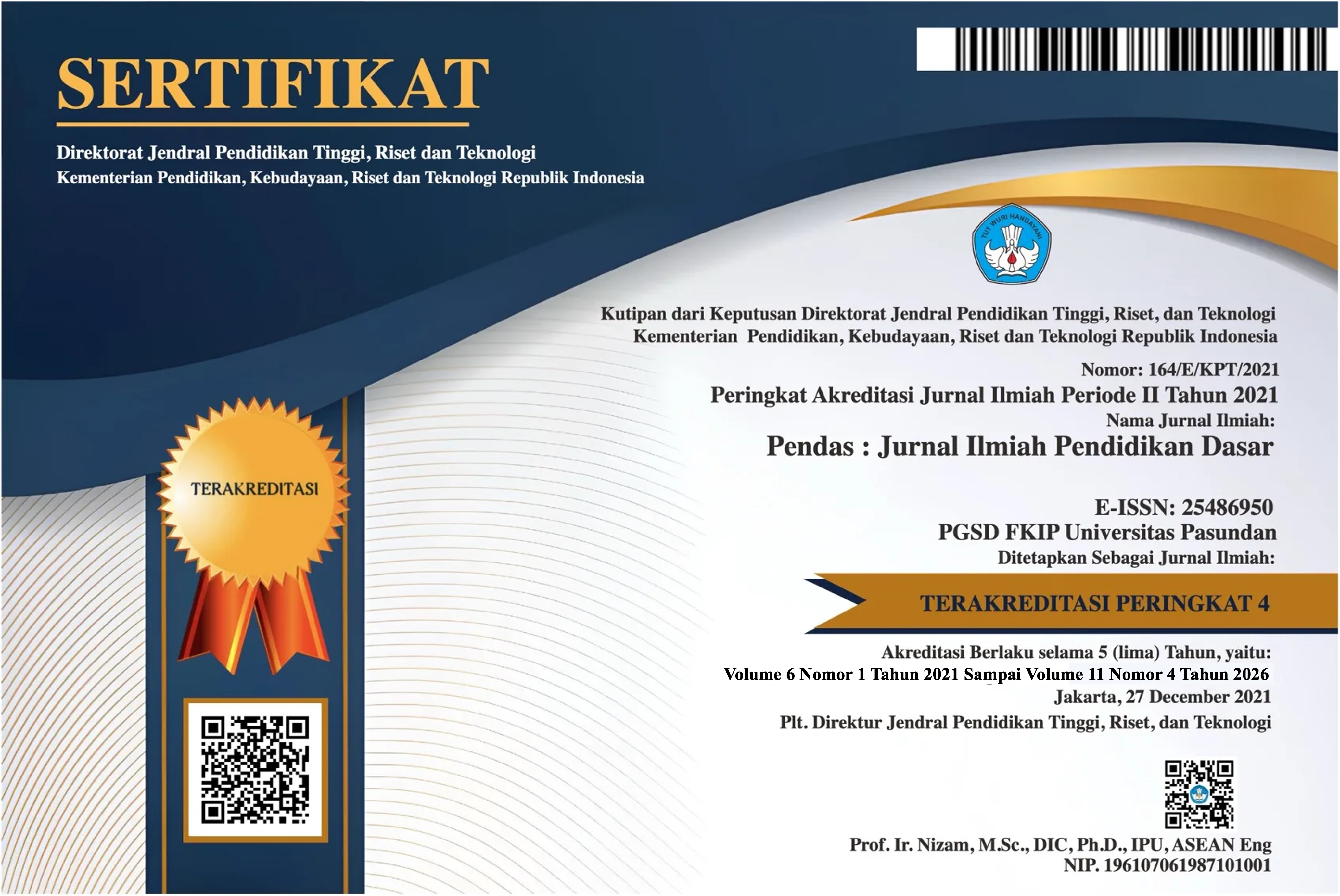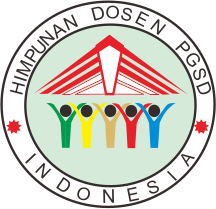INTERFERENSI BAHASA PAKPAK DIALEK BOANG PADA PENGGUNAAN BAHASA INDONESIA
DOI:
https://doi.org/10.23969/jp.v10i03.31793Keywords:
Interference, Pakpak Boang Language, Indonesian languageAbstract
Language interference often occurs in bilingual or multilingual communities that influence each other. Language becomes a medium of communication to achieve the conventions of a language community. Language is not merely an instrument for conveying information, but rather a system that contains certain meanings or messages. Language interference is not only negative, but also has positive nuances for the language-using community. It can facilitate interaction and communication between the sender and the recipient of the message. Viewed from the negative side, language interference makes the language community dislike the target language. This makes the Pakpak language community of the Boang Dialect in using Indonesian, more towards the lack of knowledge or understanding of Indonesian, resulting in a negative impact on the community of Indonesian. This type of research is a qualitative descriptive study with a sociolinguistic approach. This research will reveal an in-depth and clear picture of the occurrence of language errors that result in interference at the phonological, morphological, syntactic, and semantic levels in Dah Village, Rundeng District, Subulussalam City. This study shows that the interference of the Pakpak Boang dialect on the use of Indonesian in Dah Village, Subulussalam City, has a negative impact, reviewed from the aspects of the factors causing the interference, identifying the impacts caused by the interference, and solutions. This is closely related to the Pakpak Boang community's ability to speak good and correct Indonesian.
Downloads
References
Abdussamad, Z. (2021). Metode
Penelitian Kualitatif. Penerbit
Syakir Media Press.
Ali, M., Saputri, M., Maslim, A., &
Mursawal. (2020). Wajah
Pesisir Aceh. Penerbit: Syiah
Kuala University Press,
Banda Aceh.
Balai Pengembangan dan
Pembinaan Bahasa
Kemdikbud. (2023). KBBI VI
Daring. Pemutakhiran
Oktober 2023.
https://kbbi.kemdikbud.go.id/.
Brutu, S., Sihombing, F. T., & Aridho,
A. (2023). Konsep Filosofis
Pertuturen Sulang Silima
Suku Pakpak Dalam Menjaga
Persatuan dan Kerukunan di
Tengah Keluarga. Journal
Pusat Studi Pendidikan
Rakyat. Vol. 3 No. 2.
m/index.php/jies/article/view/
1350.
Chaer, A & Agustina, L. (1998).
Sosiolinguistik Perkenalan
Awal. Jakarta: Rineka Cipta.
Firmansyah, M. A. (2021).
Interferensi dan Integrasi
Bahasa: Kajian
Sosiolinguistik.
Paramasastra: Jurnal Ilmu
Bahasa Sastra dan
Pembelajarannya. Vol. 8, No.
amasastra.v8n1.p46-59.
Hasan, M., Harahap, T. K., &
Hasibuan, S. (2022). MetodePenelitian Kualitatif. Penerbit
Tahta Media Group.
Hasyim, Wikanda, F., & Rahmadi, F.
(2022). Integrasi Kebangsaan
Berbasis Kearifan Lokal.
Medan: Merdeka Kreasi
Grup.
Herdiansyah, H. (2010). Metodologi
Penelitian Kualitatif Untuk
Ilmu-Ilmu Sosial. Jakarta:
Salemba Humanika.
Hikmah, D.N & Manshur, A. (2024).
Analisis Interferensi Bahasa
Jawa pada Bahasa Indonesia
dalam Interaksi Belajar
Mengajar Peserta Didik di
Kelas VII M Mts Al-Amiriyyah.
PENEROKA: Jurnal Kajian
Ilmu Pendidikan Bahasa dan
Sastra Indonesia, Vol.4, No.
1.
https://ejournal.iaida.ac.id/ine
x.php/Peneroka/article/view/2
906.
Julia, A., Rijal, S., & Purwanti. (2020).
Campur Kode dan
Interferensi pada Percakapan
Mahasiswa Fakultas Ilmu
Budaya Universitas
Mulawarman: Kajian
Sosiolinguistik. Ilmu Budaya,
Jurnal Bahasa, Sastra, Seni,
dan Budaya. Vol. 4, No. 3.
https://ocs.unmul.ac.id/indexp
hp/JBSSB/article/view/2717.
Mardian, Fitri, Aspian, R. (2018).
Interferensi Bahasa Daerah
Dalam Konteks Formal di
SMA Kota Singkawang.
Jurnal Cakrawala Linguista,
Vol 1, No. 2.
https://journal.stkipsingkawan
g.ac.id/index.php/Cling/articl/
view/878.
Muhamad, H. H., Saragi, D. M., &
Sitorus, N. (2024). Pengantar
Linguistik: Teori, Konsep, danPenerapan. Padang: Gita
Lentera.
Nur Kholis, M. (2019). Proses
Interferensi Fonologi pada
Percakapan Bahasa Arab
Santri. Tsaqofiya: Jurnal
Pendidikan Bahasa dan
Sastra Arab Vol. 1 No. 2.
https://doi.org/10.21154/tsaqfi
ya.v2i1.12.
Pasee, H & Nurdin, I. (2024).
Perjalanan Forum Dakwah
Perbatasan Menyelamatkan
Akidah Umat. Banda Aceh:
Bandar Publishing,
Lamgugop.
Rahadi, F. N & Audina, S. Z. (2023).
Interferensi Dialek Bahasa
Jawa Terhadap Penggunaan
Bahasa Indonesia Sebagai
Bahasa Komunikasi. Jurnal
Multi Disiplin Indonesia, Vol.
2, No. 6.
https://doi.org/10.58344/jmi.2i
6.252.
Rahimah, A., Lubis, M.S., & Lubis,
I.S. (2019). Faktor Penyebab
Terjadinya Interferensi
Sintaksis Bahasa Angkola
dalam Bahasa Indonesia
Tulis pada Peserta Didik di
Tk Aisyah Bustanul Athfal 3
Padangsidimpuan. Jurnal
TALENTA Conference
Series: Local Wisdom, Social,
and Arts (LWSA)., Vol. 2, No.
2.
v2i2.714.
Syaidah, Handayani, N., Amir, I., &
Musaali, I. (2023). Bentuk
Tuturan Interferensi Bahasa
Mahasiswa IAIN Ambon pada
Peristiwa Tutur Bahasa
Indonesia. Jurnal Onoma:
Pendidikan, Bahasa dan
Sastra, Vol. 9, No. 2.
https://ejournal.my.id/onoma/article/vi
ew/3106.
Taufiq, A. M & Nurali, M. J. (2019).
Pengaruh Interferensi
Bahasa Bugis Bone
Terhadap Morfologi Bahasa
Indonesia di Dusun Polewali
Desa Pasaka Kecamatan
Sibulue Kabupaten Bone.
Jurnal Ilmiah Mandala
Education. Vol.7, No. 4
Umar Sidiq, Choiri, M. M., &
Mujahidin, A. (2019). Metode
Penelitian Kualitatif di Bidang
Pendidikan. Ponorofo: Nata
Karya.
Unsiah, F., & Yuliati, R. (2018).
Pengantar Ilmu Linguistik.
Brawijaya: UB Press.
Wulandari, S., Apriliani, V., &
Wikanengsih. (2019)
Interferensi Bahasa Sunda ke
Dalam Bahasa Indonesia
Pada Anak Sekolah Dasar
Kelas 4-6. Parole-Jurnal
Pendidikan Bahasa dan
Sastra Indonesia. Vol. 2,
No.1
.
Downloads
Published
Issue
Section
License
Copyright (c) 2025 Pendas : Jurnal Ilmiah Pendidikan Dasar

This work is licensed under a Creative Commons Attribution 4.0 International License.



















